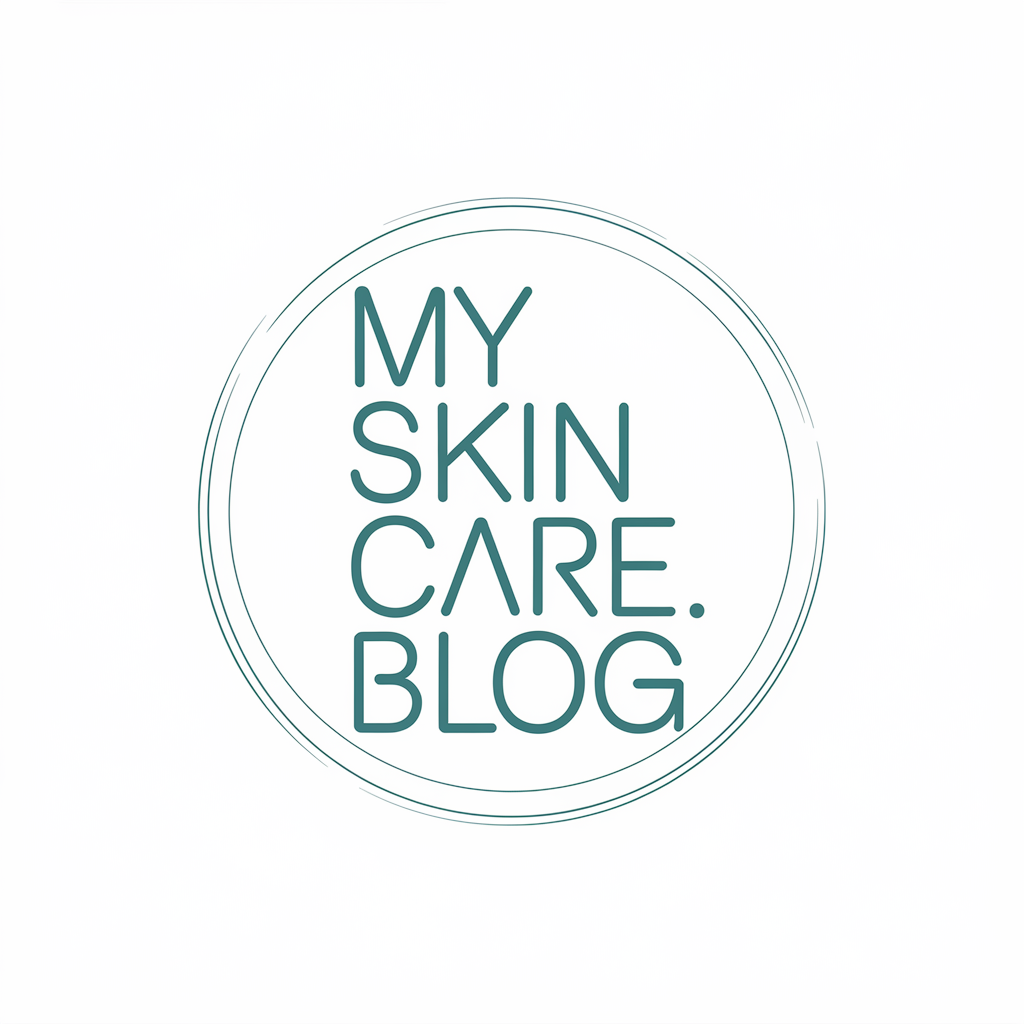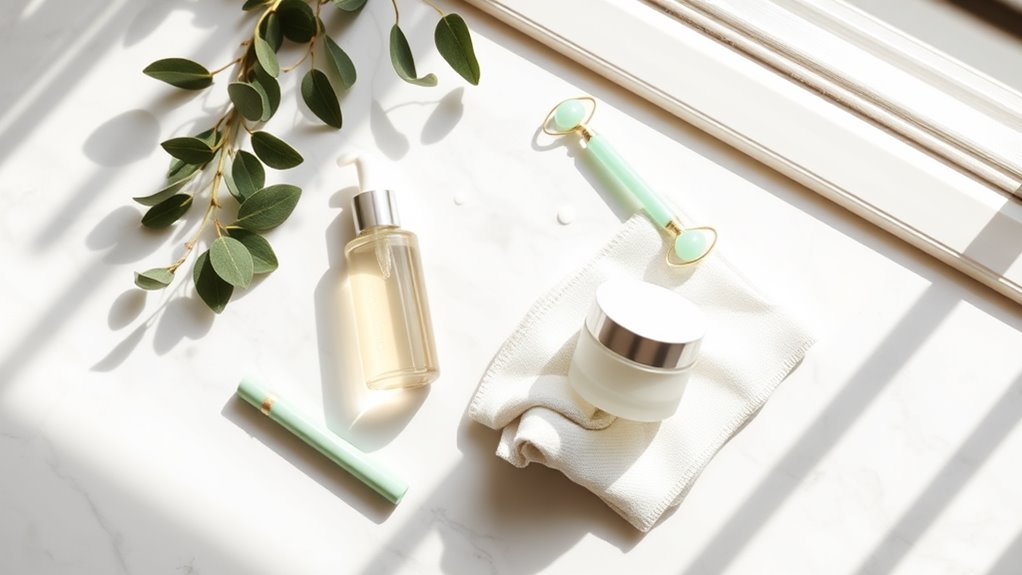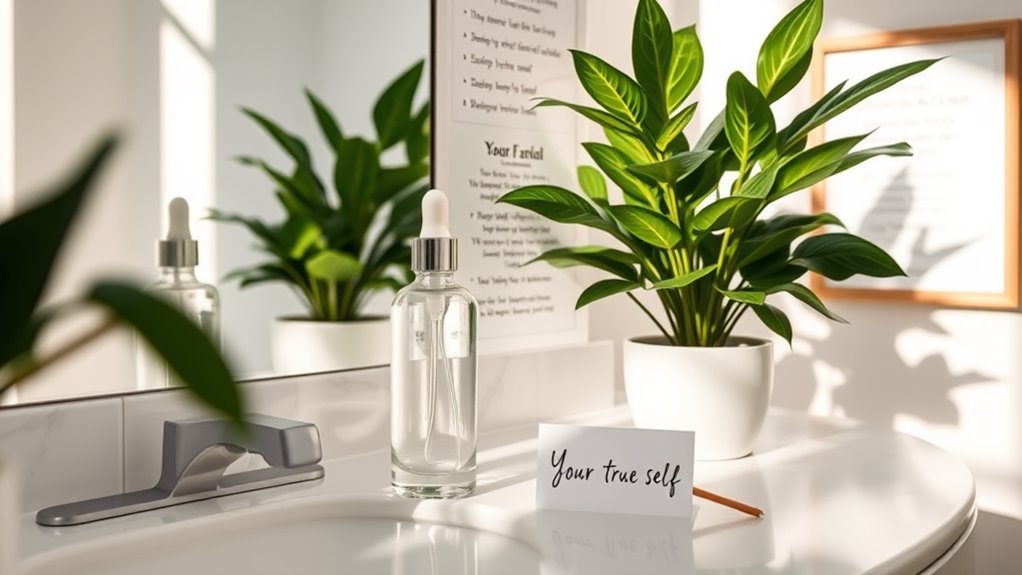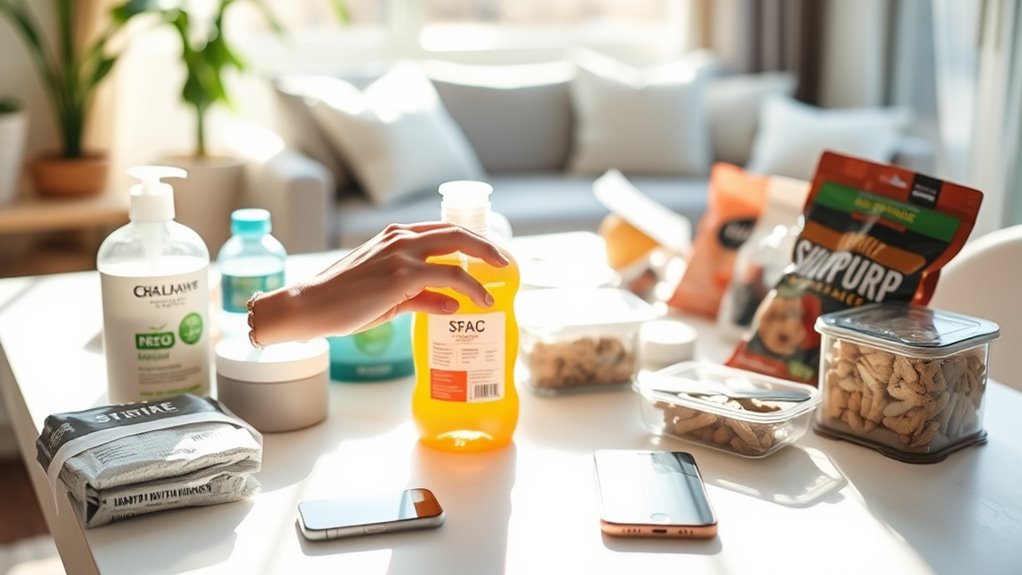Dermatologist-Approved Routine for Beginners (Simple but Powerful)
Imagine standing in front of a mirror, unsure of how to care for your skin. You want a routine that’s effective yet uncomplicated, something a dermatologist would endorse. It’s essential to understand your skin type and the basic steps to build a healthy regimen. Let’s explore how simple actions can lead to impressive results while keeping your skin glowing and protected. What should you prioritize first?
Key Takeaways
- Identify your skin type (oily, dry, combination, or sensitive) to tailor your routine effectively.
- Cleanse your skin twice daily with a gentle cleanser suitable for your skin type.
- Apply a suitable moisturizer to maintain hydration and prevent irritation after cleansing.
- Use broad-spectrum sunscreen with at least SPF 30 daily, even on cloudy days.
- Gradually introduce additional treatments like serums or exfoliants, monitoring skin reactions.
Understanding Your Skin Type
Understanding your skin type is the first step toward building an effective skincare routine.
As a beginner in skincare, you’ll want to identify whether your skin is oily, dry, combination, or sensitive.
This knowledge helps you choose the right products and avoid irritating ingredients.
To determine your skin type, observe how it feels throughout the day; if it’s shiny, you might’ve oily skin, while tightness suggests dryness.
You can also perform a simple test after cleansing: wait an hour and see how your skin reacts.
Additionally, many people mistakenly believe that their skin type can change dramatically over time, but common misconceptions reveal that it often remains consistent unless influenced by significant lifestyle changes.
Knowing your skin type sets the foundation for a successful skincare journey.
The Importance of Cleansing
How often do you think about cleansing your skin? It’s an essential step in any skincare routine, yet many overlook its importance.
Cleansing removes dirt, oil, and impurities that accumulate throughout the day, preventing breakouts and clogged pores. It sets the foundation for other skincare products to work effectively.
Depending on your skin type, you should cleanse twice a day—morning and night.
This simple habit not only enhances your skin’s texture and appearance but also boosts your confidence. Additionally, using the correct water temperature during cleansing can prevent irritation and maintain your skin’s natural barrier.
Exfoliation: Frequency and Methods
Exfoliation is a key step in your skincare routine that helps remove dead skin cells, revealing a brighter complexion. Knowing the best techniques and how often to exfoliate can make a big difference in your skin’s health. Let’s explore the top methods and recommended frequency to keep your skin looking fresh and radiant. Proper exfoliation can prevent common exfoliation mistakes that lead to skin irritation and damage.
Best Exfoliation Techniques
Wondering how to effectively exfoliate your skin? Start by choosing between physical and chemical exfoliants. Physical scrubs remove dead skin using granules, while chemical exfoliants, like AHAs and BHAs, dissolve them. Here’s a quick comparison to help you decide:
| Type | Benefits | Best For |
|---|---|---|
| Physical | Immediate smoothness | Oily skin |
| Chemical | Deep penetration | Dry or sensitive skin |
| Enzymatic | Gentle exfoliation | All skin types |
Whichever method you choose, remember to follow up with hydration for best results!
Recommended Frequency Guidelines
Finding the right frequency for exfoliating your skin is key to maintaining a healthy glow without causing irritation.
For most skin types, exfoliating once or twice a week is ideal.
If you have sensitive skin, stick to once a week to avoid redness and discomfort.
Those with oily or acne-prone skin might benefit from exfoliating up to three times weekly, but always pay attention to how your skin reacts.
Chemical exfoliants can be gentler than physical ones, so consider your skin type when choosing methods.
Moisturizing Basics
Moisturizing is key to keeping your skin healthy and radiant. Choosing the right product can make a big difference in how your skin feels, and applying it correctly is just as important. Let’s explore why hydration matters and how to find the perfect moisturizer for your needs. Additionally, understanding effective hydration techniques can help enhance your skin’s moisture retention and overall appearance.
Importance of Hydration
Hydration is essential for maintaining healthy skin, and incorporating a good moisturizer into your daily routine can make a significant difference.
When your skin’s hydrated, it looks plump and vibrant, while dryness can lead to flakiness and irritation.
You mightn’t realize it, but environmental factors, like weather and pollution, can strip your skin of moisture.
By applying moisturizer regularly, you’re not just locking in hydration; you’re also creating a barrier against these external aggressors.
Remember, hydrated skin can better fight signs of aging, so don’t underestimate this vital step in your skincare routine.
Your skin will thank you!
Choosing the Right Product
How do you know which moisturizer is right for your skin type?
Start by identifying your skin’s needs.
If you have oily skin, look for lightweight, gel-based formulas that won’t clog pores.
For dry skin, opt for creamier options packed with hydrating ingredients like hyaluronic acid or glycerin.
Combination skin may require a balance, so consider a versatile moisturizer that hydrates without overwhelming.
If you’re sensitive, stick to fragrance-free products with soothing components like aloe or chamomile.
Always test new products on a small area first to avoid irritation.
Choosing wisely can make a significant difference in your skincare routine.
Application Techniques Explained
Once you’ve chosen the right moisturizer for your skin type, applying it correctly is key to maximizing its benefits.
Start with a clean face—gently pat your skin dry.
Take a dime-sized amount of moisturizer and warm it between your palms.
This helps with even application.
Using upward strokes, apply the moisturizer, starting from the center of your face and moving outward.
Don’t forget your neck!
Allow it to absorb for a minute before layering any other products.
Aim to moisturize twice daily, morning and night, to keep your skin hydrated and healthy.
Consistency is your best friend.
Sun Protection Essentials
Why is sun protection essential for your skin care routine?
UV rays can damage your skin, leading to premature aging, sunburns, and even skin cancer.
To keep your skin healthy, apply a broad-spectrum sunscreen with at least SPF 30 daily, even on cloudy days. Daily sunscreen application is the most essential and cost-effective anti-aging skincare product you can use.
Don’t forget to reapply every two hours, especially if you’re sweating or swimming.
You can also wear protective clothing, hats, and sunglasses for added defense.
Incorporating these sun protection essentials into your routine isn’t just smart; it’s crucial for maintaining your skin’s health and youthful appearance.
Protect your skin today for a brighter tomorrow!
Nighttime Skincare Routine
After taking the necessary steps to protect your skin during the day, it’s important to nourish and repair it at night.
Start by cleansing your face to remove dirt and makeup, setting the stage for better absorption of products.
Next, apply a toner to balance your skin’s pH.
Follow with serums packed with active ingredients like hyaluronic acid or retinol, targeting specific concerns.
Finish with a moisturizer to lock in hydration.
If you’re feeling extra indulgent, consider adding an overnight mask or treatment.
This routine not only rejuvenates your skin but also prepares it for the day ahead, especially since sleep deprivation can lead to dark circles and compromised skin barrier function.
Building a Long-Term Routine
How can you establish a skincare routine that truly meets your skin’s needs over the long haul?
Start by evaluating your skin type and concerns.
This helps you choose the right products.
Stick to a simple regimen—cleanser, moisturizer, and sunscreen daily.
Gradually incorporate treatments like serums or exfoliants based on your skin’s response.
Monitor how your skin reacts and adjust accordingly; what works today may change over time.
Don’t forget to stay consistent, but also allow for flexibility. Additionally, consider effective skincare products that align with your skin type and budget to maximize your routine’s benefits.





